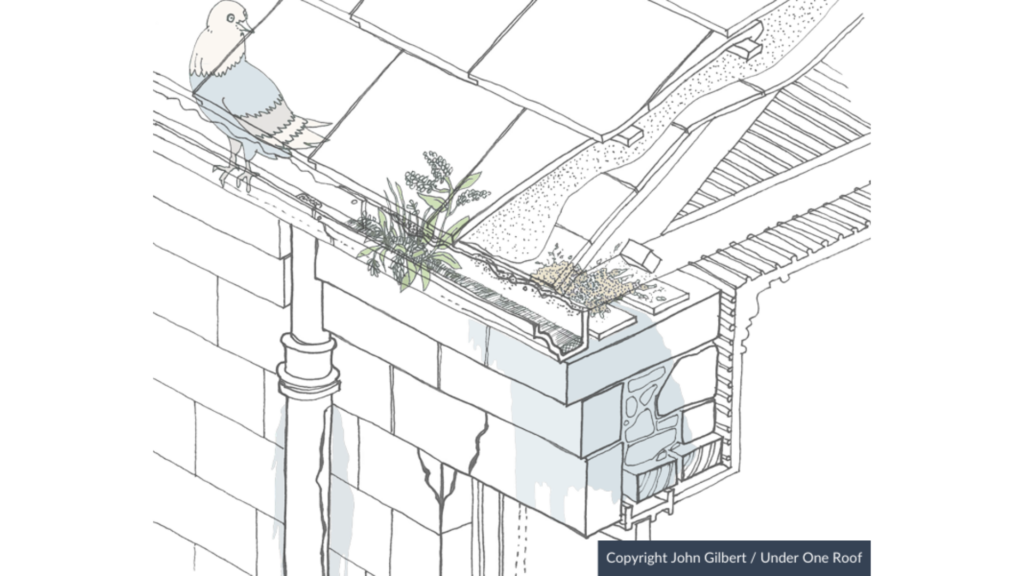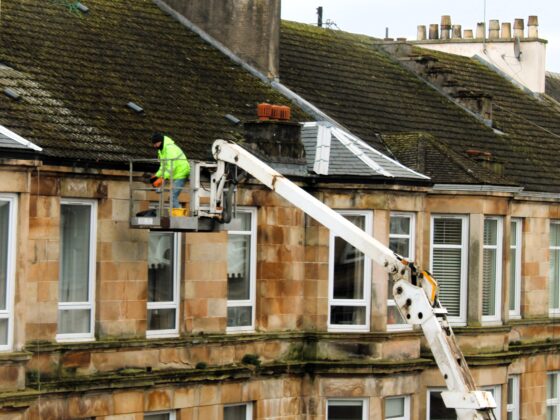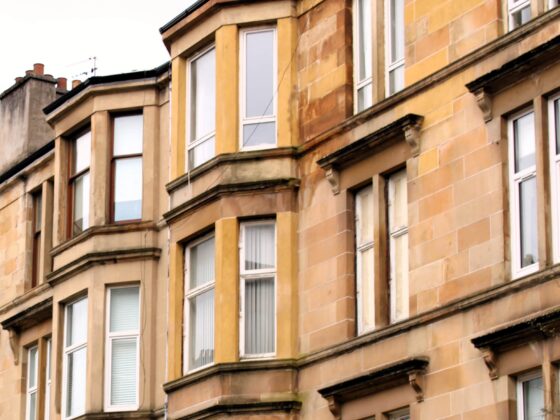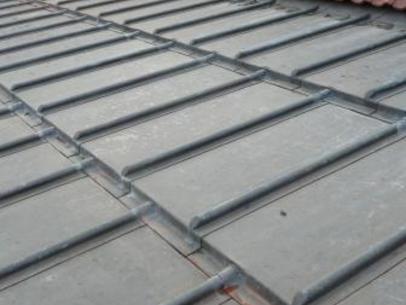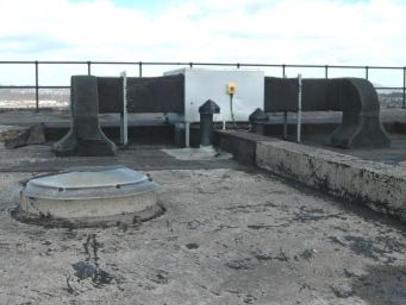During autumn and winter, tenement buildings and flats often face more common maintenance issues. Keep reading to find out what to look out for to protect your property and maintain its value this winter.
Blocked or overflowing gutters
With increasing rainfall, it’s important to stop gutters from becoming blocked and overflowing. If plants, leaves, or bird deposits are blocking a gutter, it can leak and cause damp problems within the walls of a tenement building. Untreated damp can cause decorative and, in some cases, structural damage to your building.
Look out for damp and stains underneath the gutter, which can be the first signs of leaks and overflows. If you can see plants growing out of your gutter, even if they are small, this likely means the gutter is blocked and water is overflowing.
Draughty windows and doors
As the winds get colder, it’s recommended to draught-proof windows and doors to stop cold air blowing through. Recognising the tell-tale signs of draughts, such as cracks, gaps, mould, or dampness around windows and doors, is the first step and they can be straightforward to address once identified. You can find DIY sealing tools or thermal curtains at most local hardware stores to address the root causes of draughts. However, if you suspect a more serious issue, it’s recommended to seek professional help. Draught-proofing can also help to reduce your energy bills by keeping your property warmer and making it more energy-efficient through the winter months.
Damp, damage, and rot
Keeping your property ventilated throughout winter can help to prevent damp and reduce the risk of mould and rot. If there are areas of damp and mould, thorough cleaning is one of the first steps to take to prevent it from spreading further and causing more damage. Dry out affected areas by opening a window, putting the heating on low, or using a dehumidifier. If thorough cleaning and ventilation don’t have an adequate affect, seek further help and advice from a professional damp specialist or speak to your local council.
Check your floors for any signs of damp or rot by looking out for bouncy boards or sloping and uneven surfaces. These may indicate that floorboards could be lacking support or rotting. If this is the case, consult a professional as soon as possible. Solving issues like this early is key in making them easier to fix and ensuring they don’t cause further damage.
Burst pipes
To try and avoid burst pipe disasters in winter, it’s crucial to know the location of the stopcock which enables the mains water supply to your flat to be turned off. Encourage your co-owners to identify and be aware of the stopcocks in their flats, especially if they are going to be away during the colder season. You can also post a notice in the close, telling residents where to locate the water key and valve to shut off water for the entire building.
Additionally, insulating any exposed pipes in your building can add a layer of protection and minimise the risk of freezing. Lastly, ensure that all your co-owners have adequate common building insurance. Having the right cover is essential for dealing with any unforeseen water-related incidents effectively.

